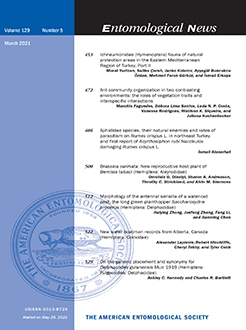The long green planthopper Saccharosydne procerus is one of the serious pests of water-oat Zizania latifolia. Characterization of its antennal sensilla is vital for developing practical monitoring and management strategies of this pest. In the present study, the antennae of S. procerus (with particular focus on the sensilla) are illustrated using scanning electron microscopy. The results show that the antennae of both sexes are similar. The flagellum consists of an apical segmented arista and a basal bulb. Four types of sensilla were identified: campaniform sensilla, trichoid sensilla, chaetic sensilla and plaque organs. The campaniform sensilla are found on the distal rim of the scape. The trichoid sensilla I are sparsely distributed on the scape, and the trichoid sensilla II are densely distributed on the 3/4 distal area of the pedicel. The chaetic sensilla are sparsely distributed on the outer margin of the scape and pedicel. Abundant plaque organs are exclusively distributed at the distal area of the pedicel. The morphology and distribution of sensilla are compared and their possible functions are discussed.
How to translate text using browser tools
25 May 2021
Morphology of the Antennal Sensilla of a Water-Oat Pest, the Long Green Planthopper Saccharosydne procerus (Hemiptera: Delphacidae)
Haiying Zhong,
Juefeng Zhang,
Fang Li,
Jianming Chen
ACCESS THE FULL ARTICLE

Entomological News
Vol. 129 • No. 5
March 2021
Vol. 129 • No. 5
March 2021
antenna
Fulgoromorpha
scanning electron microscopy
sensilla




